Kanji for “To Go”: 行 (i-ku / yu-ku / okona-u)
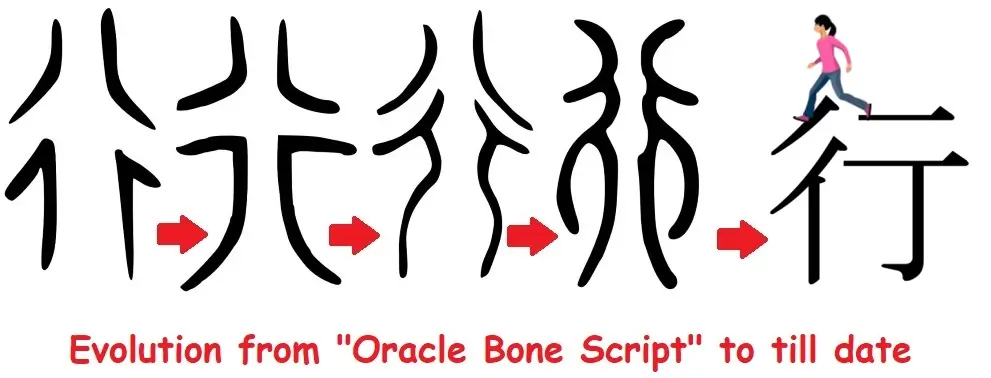
The Japanese kanji meaning “go” is 行. This Kanji for “go” also means “to carry out”.
The kun’yomi (Japanese reading) pronunciations of the Kanji 行 are “i-ku” (い-く), “yu-ku” (ゆ-く), and “okona-u” (おこな-う). The on’yomi (Chinese reading) pronunciations of 行 are “ko” (コウ), “gyo” (ギョウ), and “an” (アン).
The Kanji 行, for “go“, appears in 1,722 Japanese names, and in that case, it is pronounced as “yuki” (ゆき).
The Kanji 行 is constructed with 6 strokes. 行 is a part of the JLPT N5 syllabus (please check the list of JLPT N5 Kanji). In Japanese schools, this Kanji is taught in grade 2.
Origin of the Shape 行
If we see the old shape of the Kanji 行 in the Oracle Bone Script, it depicts a crossroad with a wider vertical road. This wider vertical road indicates the act of going straight in a given direction.
Let’s see the evolution of the shape of the Kanji, meaning “to go” or “to carry out,” from ancient times to the current:
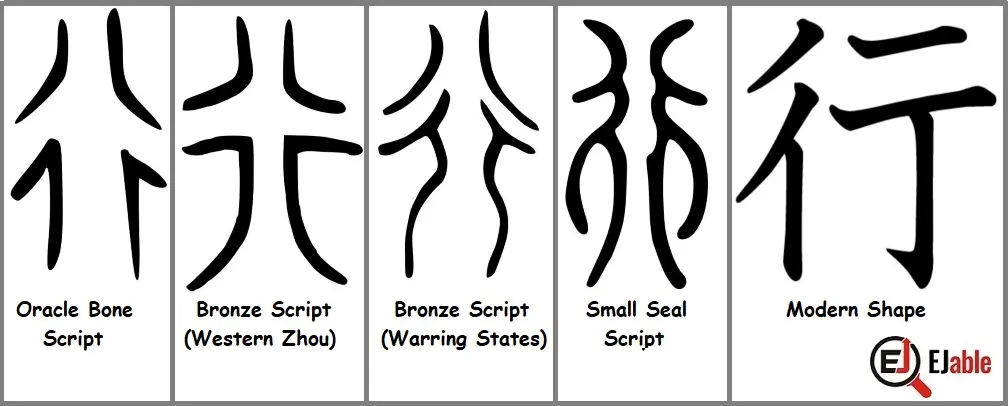
The above image shows the historical shape of 行 in Oracle Bone Script, Bronze inscription of the Western Zhou and Warring States period, small seal script, and how we write it in the present.
At first glance, the current shape of the Kanji 行 seems completely different from the ancient Oracle Bone script. However, a closer look tells us how the modern shape of this Kanji relates to the old shape even though the number of strokes has increased from 4 to 6 now. Please check the following illustration for this logic.
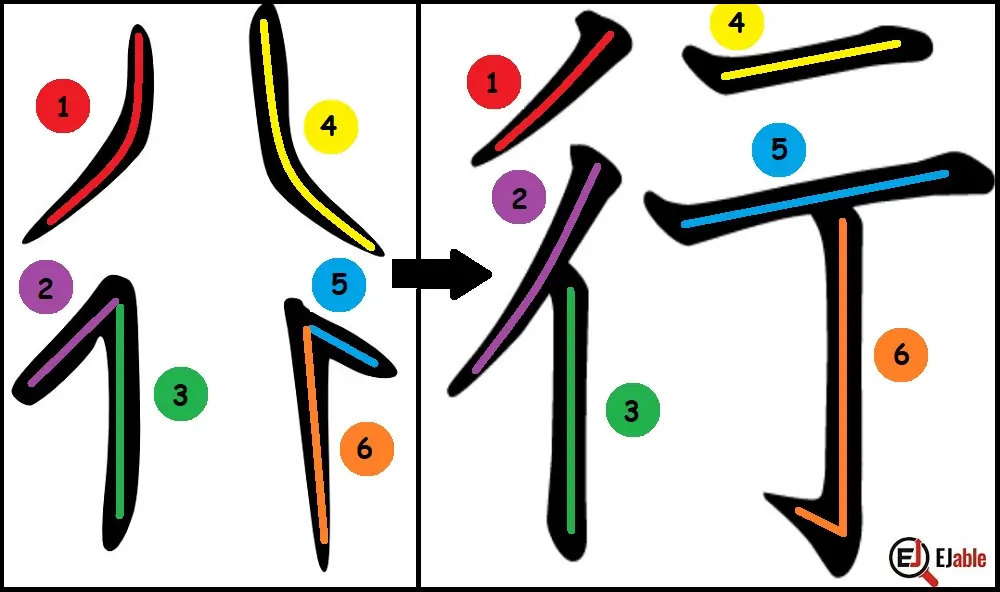
Mnemonic: How to Remember the Kanji for “Go” (行)
Relating the current shape to the old shape during the Oracle Bone script and the logic that the wider vertical road of the interaction suggests the act of going makes the Kanji 行 easy to remember. However, the following illustration can serve as a better mnemonic to remember this Kanji without knowing about its origin:
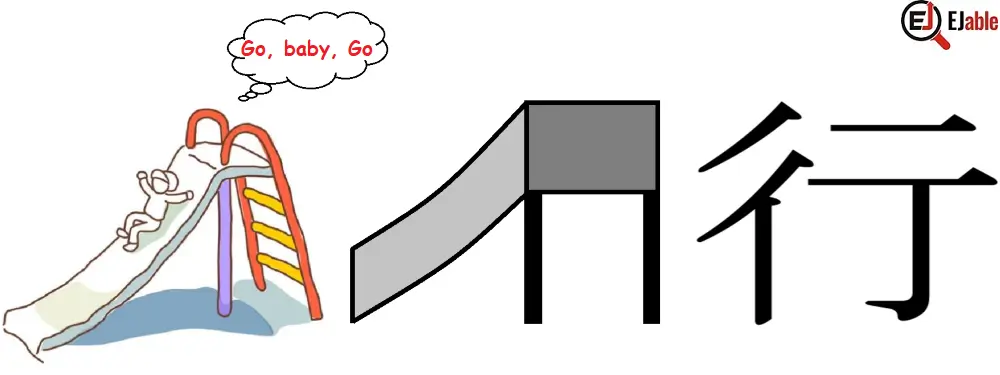
You don’t like this?
Well, two pictures can always be better than one – and so, two mnemonics. So, here is the other mnemonic. Consider a bridge across the river with a break. You don’t have any option but “to go” to cross the river even if the bridge is broken:
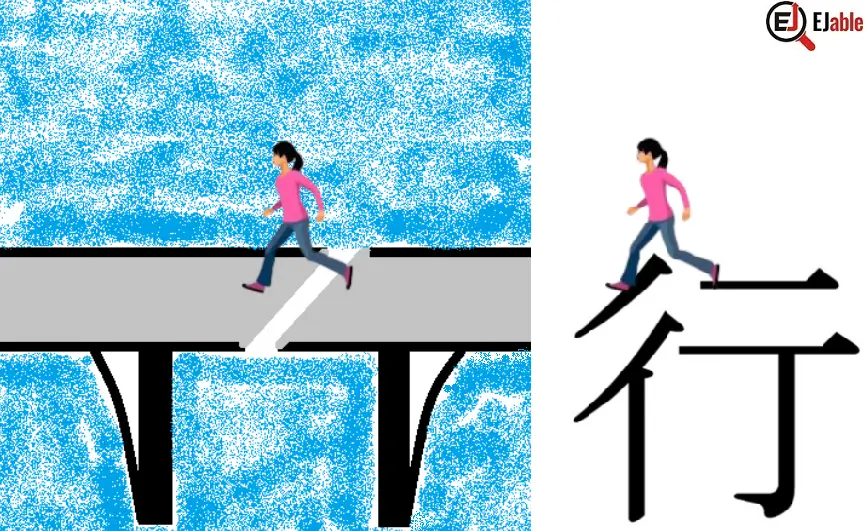
Stroke Order for the Kanji 行 (Go)
The following illustrations show the order of the 6 strokes to write the Kanji 行:
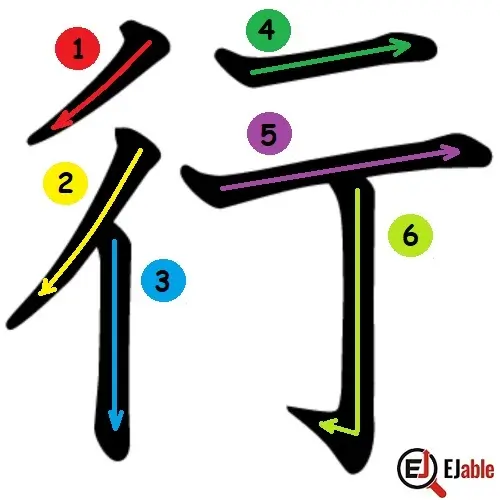
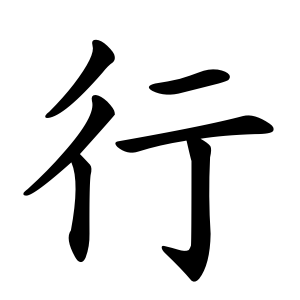
Kanji for Go 行 as a Radical or Component
The Kanji 行 does not appear as a radical in other Knaji characters. However, please note that the left part of this Kanji, i.e., “彳”, is a common Kanji radical, known as the “going” or “walking steps” radical. But this kanji appears as a component in 25 other Kanji characters, out of which the following 6 are Jōyō (commonly used) Kanji:
- 術 [Jutsu (ジュツ)]: technique
- 衛 [Ei (エイ)]: defense
- 街 [Kai (カイ), Gai (ガイ), Machi (まち)]: town, street
- 衝 [Shō (ショウ)]: collide
- 衡 [Kou (コウ)]: equilibrium
- 桁 [Keta (けた)]: column, girder, digit
Kanji 行 in Compounded Words
The kanji 行 appears commonly in Japanese and forms part of many compound words. There are 265 Japanese words that begin with the Kanji 行, and it appears in 1532 words.
Examples of Kanji 行 in Compounded Kanji Characters
- 行動 (こうどう / kōdō): Action, behavior; refers to the act of doing something or moving.
- 行列 (ぎょうれつ / gyōretsu): Queue, procession; a line of people or things moving in an orderly fashion.
- 通行 (つうこう / tsūkō): Passage, traffic; the act of passing through a place or along a route.
- 行方 (ゆくえ / yukue): Whereabouts; the place where someone or something has gone.
- 銀行 (ぎんこう / ginkō): Bank; financial institutions where transactions are conducted.
- 行事 (ぎょうじ / gyōji): Event, ceremony; scheduled activities or formal occasions.
- 行政 (ぎょうせい / gyōsei): Administration; the management of public and governmental affairs.
- 直行 (ちょっこう / chokkō): Direct (travel); going directly to a destination without stopping.
- 休行 (きゅうこう / kyūkō): Suspension of service; used in contexts like public transportation services not operating temporarily.
- 行程 (こうてい / kōtei): Itinerary, course; the planned route or sequence of events on a journey or in a process.
- 先行 (せんこう / senkō): Preceding, going ahead; something that occurs before or leads the way.
- 行先 (ゆくさき / yukusaki): Destination; the place to which someone or something is going or being sent.
These compound words illustrate various applications of the kanji “行” meaning “go” in Japanese, emphasizing movement, action, and processes across various contexts.
Note: Check other Kanji characters on the page “How to Remember Kanji“.

A long-term ex-pat in Japan, Himanshu comes with an IT background in SAP consulting, IT Business Development, and then running the country operations of an IT consulting multinational. Himanshu is the co-founder and Managing Director of ReachExt K.K. and EJable.com. He is also an Advisory Board Member of a Silicon Valley AI/IoT startup.
